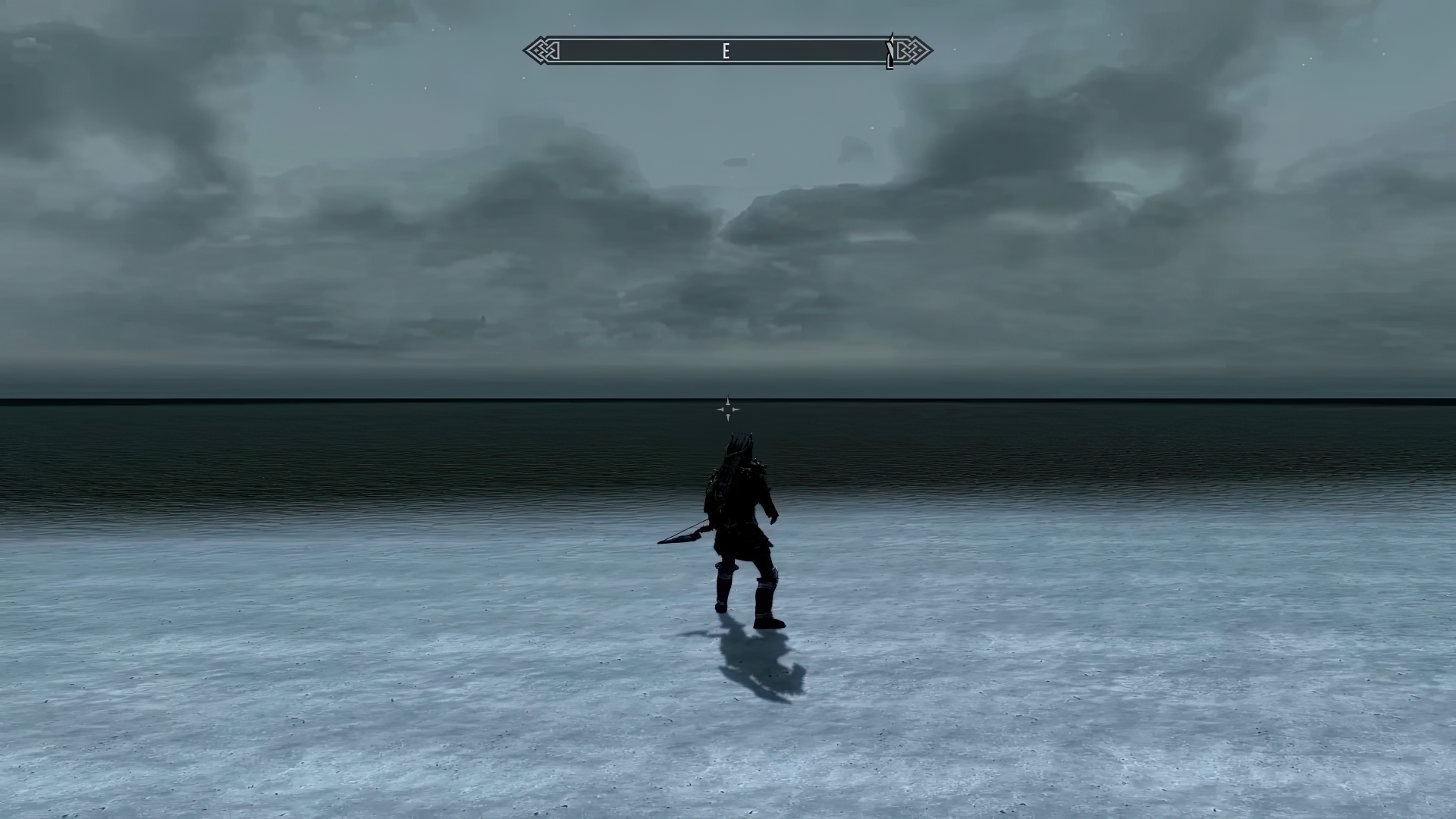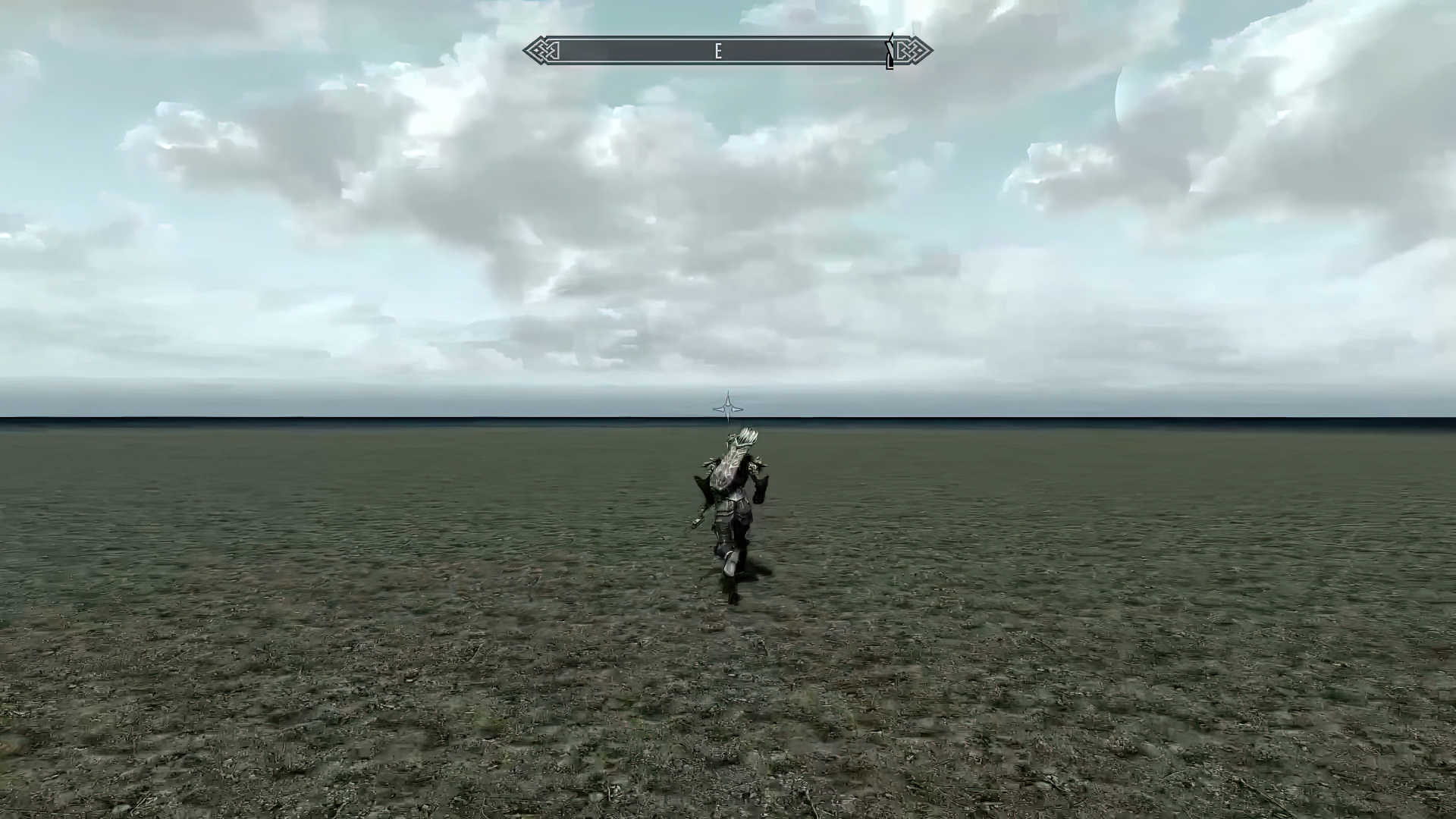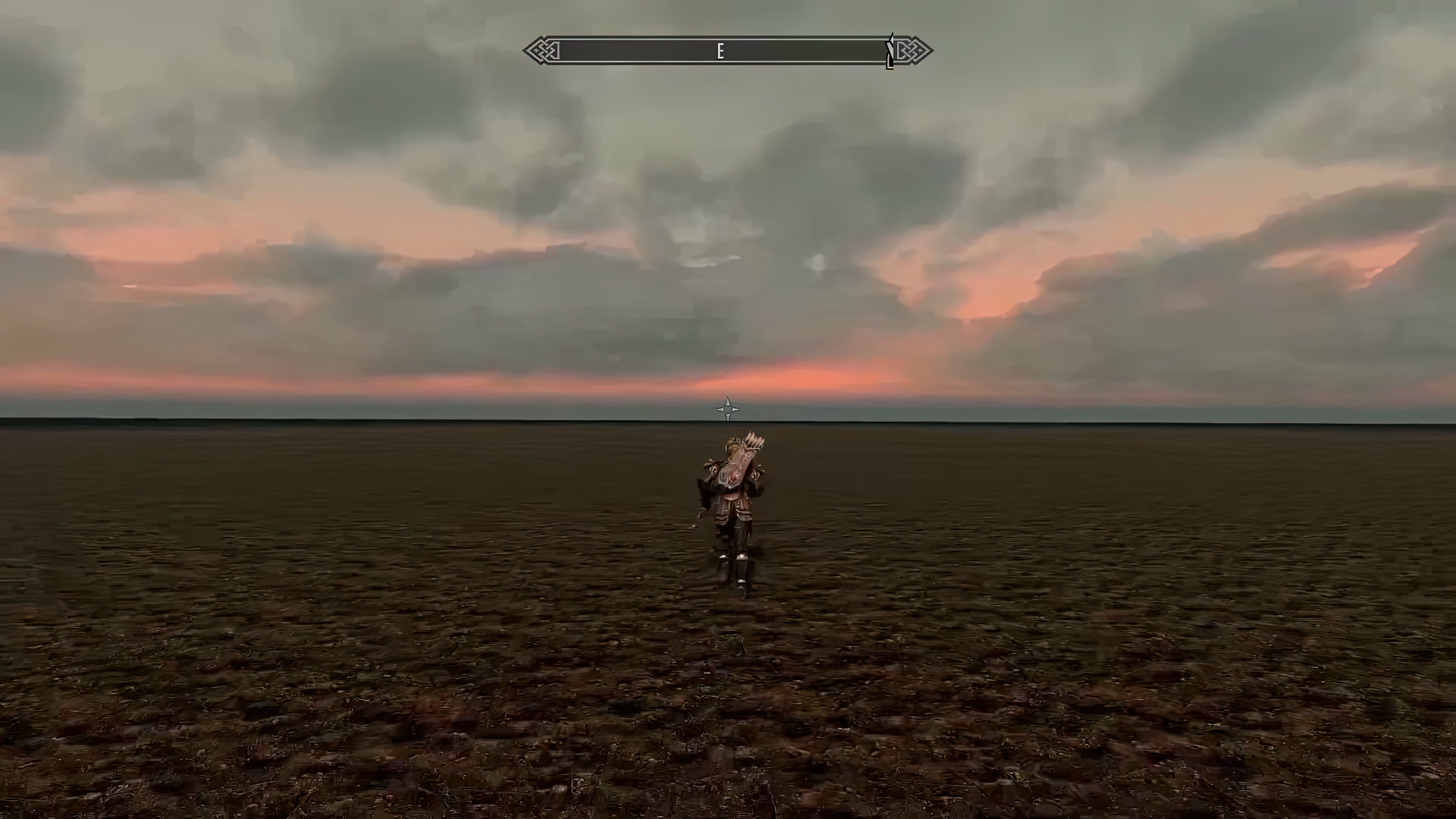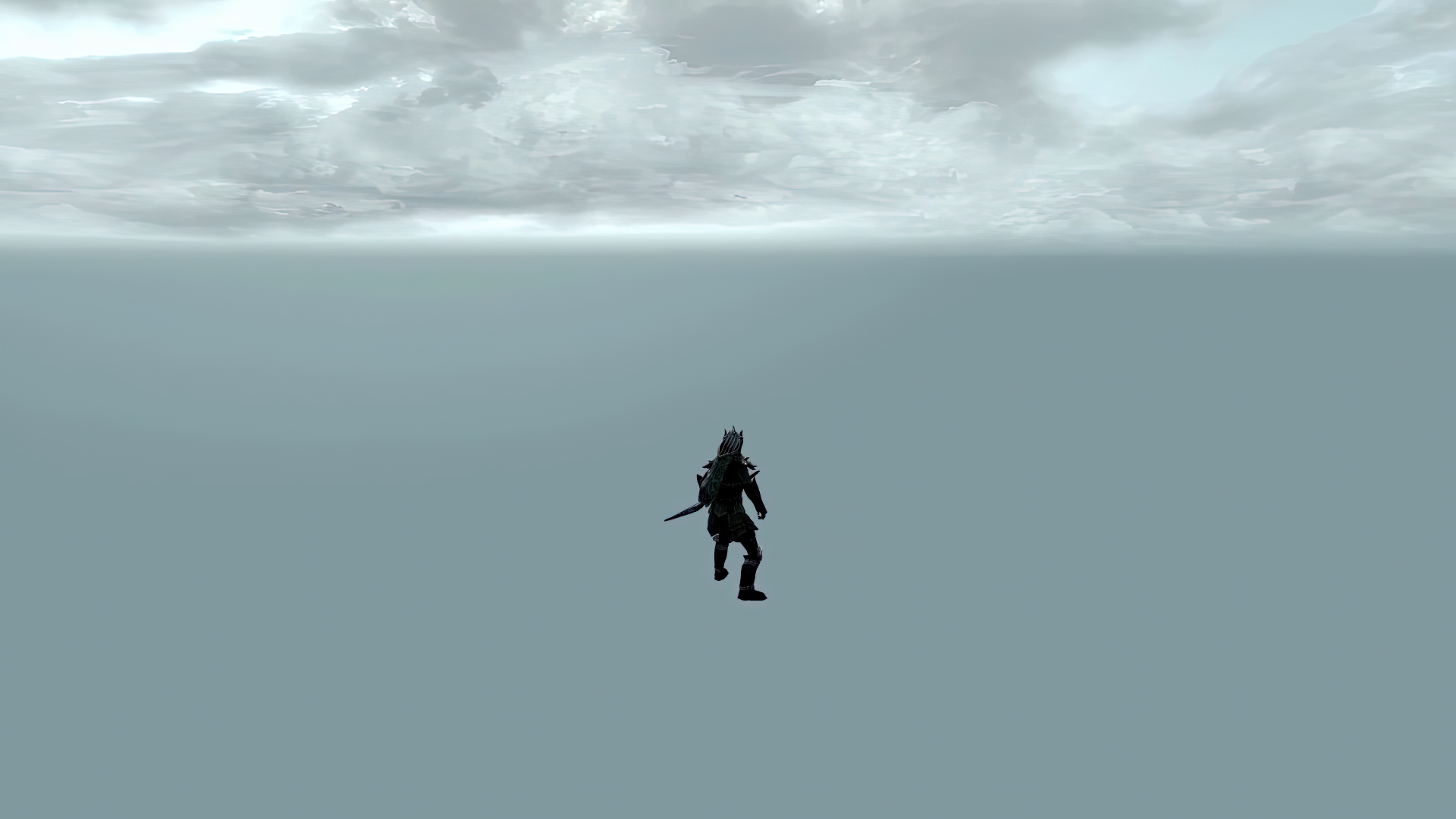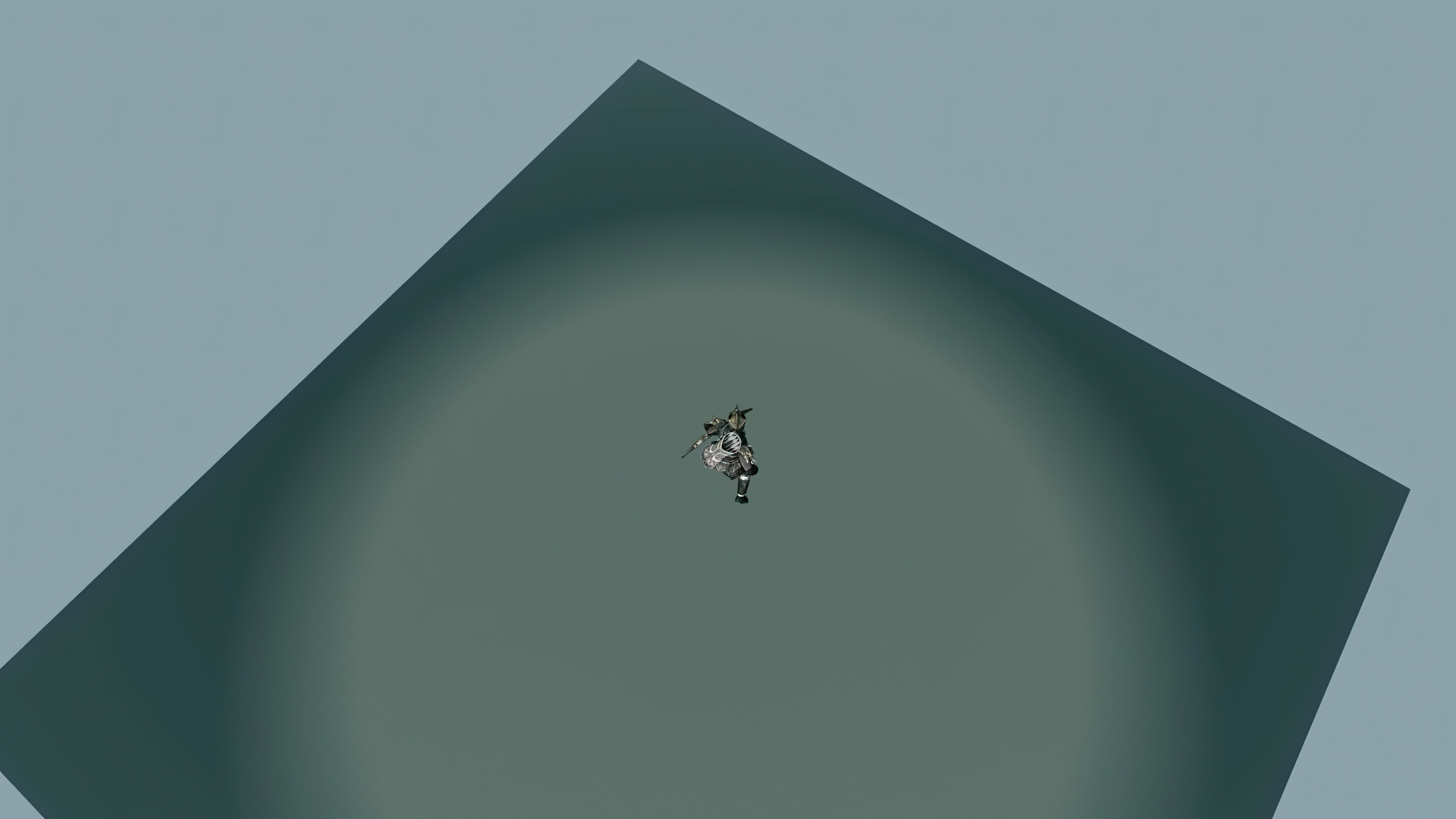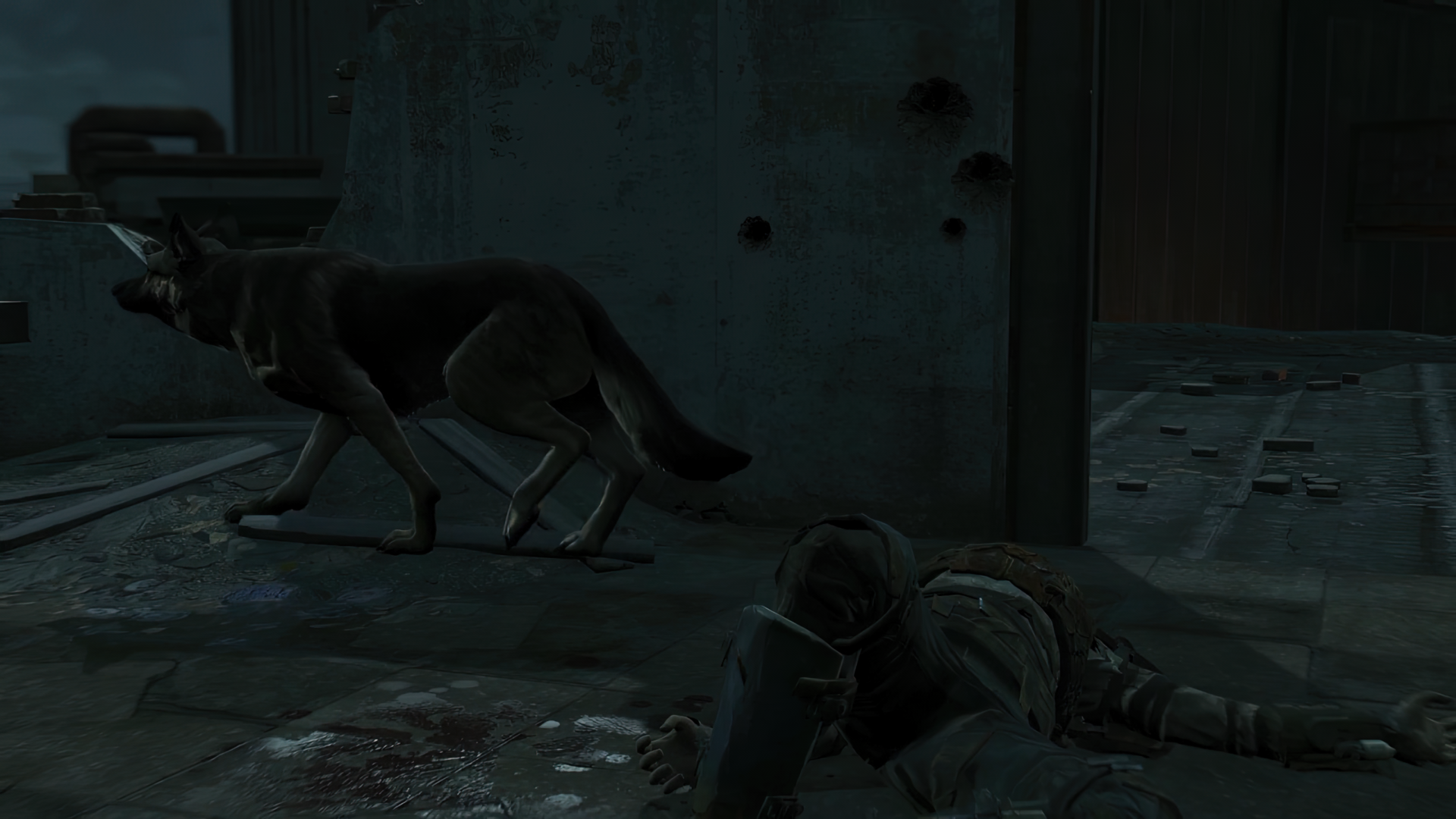FINDING JOY AT THE END OF THE WORLD
Patreon-exclusive content
〰️
Patreon-exclusive content 〰️
Marche vers l'est (2016) is an improvised performance in search of the end of the world in Skyrim, in which the artist deliberately looks for ways to break the game in order to bring its sheer artificiality to the foreground. As Alix Desaubliaux explains,
I wanted to play with the very concept of role playing. The character discovers that he is trapped in an artificial setting, a constructed world, a very elaborate trap. I made March of the East by chance, because I got bored with the game’s quest — the assigned goal so to speak — and I wanted to explore further and discover the boundaries of the territory I was traversing. As I used a cheat code to cross the last frontier between the playable world and the Out of Bounds area, I kind of gave up on my character in my mind and I knew I was leading her to an inevitable end. I knew I wasn’t going to play anymore as I was supposed to. But the more I walked east, the more I was surprised about the indefiniteness of the world. I was expecting an abrupt end, a fall into the void or something. This experimental exploration ends after a day and a night of (in-game) walking. The game map becomes gradually distorted but outside, there is no difference at all, apart from the main island that is no longer viewable. It was largely sufficient for me: I didn't want to push until I maybe came across an invisible wall or something that could technically end the world.
Matteo Bittanti
This is a Patreon exclusive article. To read the full text and access the content consider joining our Patreon community.


